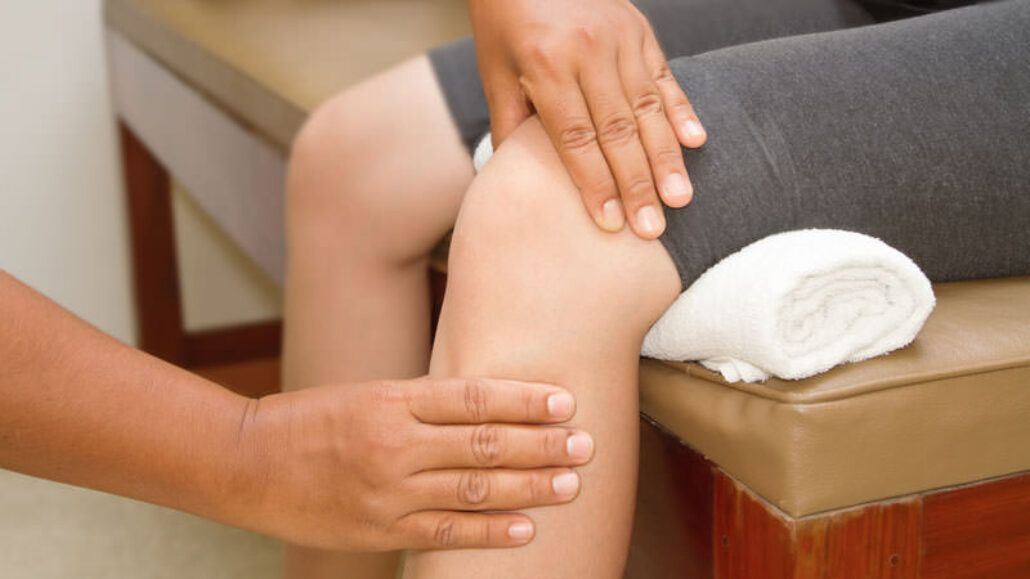Once a kneecap has dislocated, the risk of subsequent dislocations, permanent cartilage damage, and osteoarthritis increases substantially. Dr. Skendzel discusses the surgeries he uses to reduce this escalating injury risk and protect knee function.
Starting with conservative treatment
A dislocated kneecap is a fairly common injury among young athletes, and a first injury rarely requires kneecap stabilization surgery. However, a first dislocation can set in motion a series of subsequent injuries that cause permanent damage to joint cartilage. Dr. Jack Skendzel explains the surgical options available when knees are at risk.
“Most of the kneecap dislocations I treat are sports injuries,” he says. “However, people who are loose-jointed or have a shallow groove are at extra risk. Potentially, someone could pop out a knee in the kitchen while picking up a gallon of milk. At Summit, we emphasize a conservative approach to care. We can usually treat a first dislocation nonsurgically with a brace, therapy, and rest.
Risks of repeated dislocations
“As an orthopedist, I am concerned for the cartilage under the kneecap. Every dislocation increases the risk of a subsequent dislocation. Over time, these dislocations can tear and damage cartilage and trigger osteoarthritis. Healthy cartilage goes hand in hand with good knee function. It does not regrow well, so I want to protect that original cartilage. If one of my patients has a second kneecap dislocation, it’s time to discuss surgical options to stabilize the knee and prevent additional cartilage damage.”
Kneecap stabilization surgery
Dr. Skendzel performs a high volume of kneecap stabilization surgeries every year, using one of two major surgical approaches. He uses X-rays, and sometimes an MRI, to evaluate the patient’s condition and recommend a surgery, considering factors such as whether the patient is loose-jointed and whether she or he has a shallow groove. Specific measurements are taken to evaluate the kneecap and shinbone alignment.
- MPFL reconstruction surgery. “This is the most common surgery used to address an unstable kneecap,” Dr. Skendzel explains. “I take one of the patient’s hamstrings, or a hamstring from a cadaver, and make a new ligament to replace the damaged medial patellofemoral ligament, or MPFL, that holds the kneecap in place. This is outpatient surgery that can be performed in about an hour.”
- Tibial tubercle osteotomy. In cases where the patient’s kneecap and shinbone aren’t well aligned, this surgery is used to reposition the bones in the knee joint. “In this procedure,” Dr. Skendzel explains, “I cut a piece of bone from the shin and then I shift the alignment of the kneecap so that the bones are correctly positioned. This is also performed as an outpatient surgery.”
Recovery and success rates
Each kneecap stabilization surgery require a six- to eight-month recovery period. The patient is on crutches for six weeks and then works with a Summit physical therapist to regain motion and rebuild strength.
“These surgeries are very successful,” says Dr. Skendzel. “The national patient satisfaction rate for kneecap stabilization surgery is over 90 percent, which is excellent. All of my patients have done really well, and those are the outcomes that matter most to me.”
Summit Orthopedics offers comprehensive sports medicine expertise
From Olympians to pro athletes to kids in youth sports and those that just want to be more active—Summit Orthopedics delivers expert care by fellowship-trained sports medicine physicians. If you are recently injured or concerned about ongoing pain, Summit Orthopedics sports medicine specialists have the expertise to evaluate your discomfort and develop a plan to quickly and safely help you get back to being active.
Start your journey to stronger, healthier athletic condition. Find your sports medicine expert, request an appointment online, or call us at (651) 968–5201 to schedule a sports medicine consultation.
Summit has convenient locations across the Minneapolis-St. Paul metro area, serving Minnesota and western Wisconsin. We have state-of-the-art centers for comprehensive orthopedic care in Eagan, MN, Vadnais Heights, MN, Plymouth, MN, and Woodbury, MN, as well as several additional community clinics.
Additional resources for you
- More from Dr. Skendzel on unstable kneecaps: What Are The Risks Of An Unstable Kneecap?
- Find out: Do You Have An Unstable Kneecap?
- More on Summit’s Sports Medicine services
- From American Academy of Orthopedic Surgeons (trusted external resource): Unstable Kneecap

